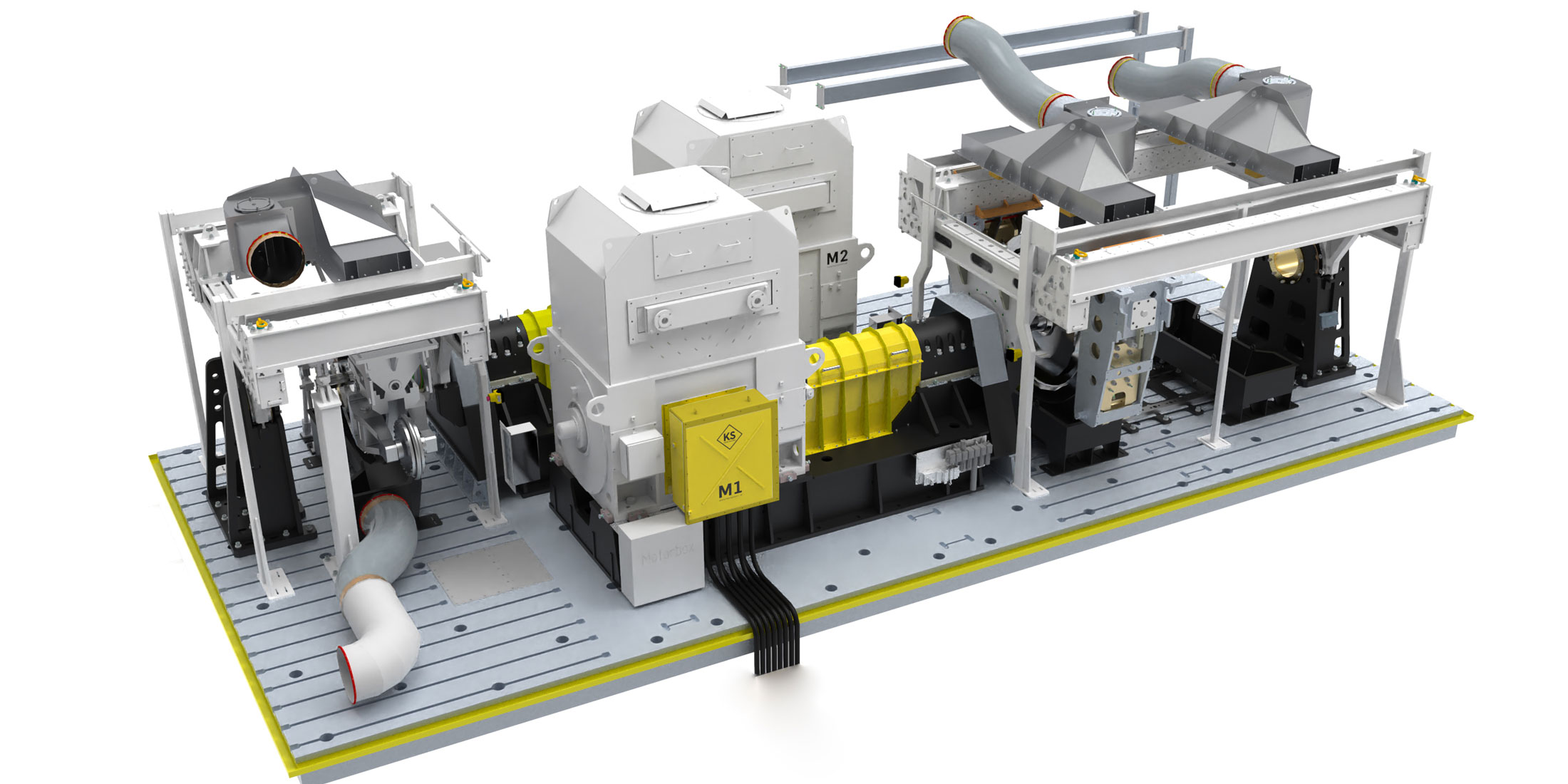
At the TU Graz-Institute of Structural Durability and Railway Technology , a Novel Test Rig for Rail Vehicles is being built and will allow for the first time investigations of brake loads and their effects on the complete chassis.
“With this test rig, we are opening up a new area of research and entering uncharted territory,” says a delighted Martin Leitner. The term “uncharted territory” was deliberately chosen by the head of the Institute of Structural Durability and Railway Technology at Graz University of Technology (TU Graz). On the one hand, the institute will in future operate on the market as one of the world’s few independent test centres for rolling-stock braking systems. “On average, waiting times for such approval inspections can currently be half a year to a year. We want to remedy this situation,” says Leitner. On the other hand, a major focus of the planned investigations will be on research and development projects that go beyond standard applications.
Innovative concept: electric motor instead of flywheel
Conventional test rigs of this kind work with steel discs with masses of several tonnes per disc, which – driven by a comparatively smaller motor – can store an enormous amount of energy. These rotating flywheel masses simulate the inertia of the rail vehicle and are braked using the brakes to be tested. “The flywheel test rig is relatively inflexible and susceptible to vibrations in the drive train due to the complex mechanical structure. Furthermore, it is not possible to implement continuous braking tests until the flywheel comes to a complete standstill,” says Martin Leitner, pointing out the possible weak points.
The new brake test rig at TU Graz is based on an innovative concept. Instead of flywheels, a comparatively larger electric motor with 1.4 megawatts of power is used. This enables flexible test scenarios with rapidly changing loads to be carried out. Braking systems of high-speed trains with speeds of up to 500 km/h will also be tested.
Greater variety thanks to second test chamber
What’s more, the innovative drive system opens up a wide range of new vehicle-specific tests – from braking to a complete standstill as well as parking brake and brake jolt tests. In addition, the test rig will have two test chambers, each with its own electric machine. One test chamber is available for standard tests of individual components, such as disc or pad brakes. The second test chamber additionally fulfils special functionalities for further test scenarios with larger space requirements.
This also opens up completely new possibilities for basic research, as Leitner explains: “In real-life operation, braking processes and the resulting vibrations lead to fatigue of chassis components due to the recurring loads. This can facilitate crack inititation in the material, which may subsequently cause failure.” These brake-induced vibrations have been subject to little scientific research. The new test rig at TU Graz should provide new insights here.
Graz-based testing technology specialist realizes implementation
The globally active technology company KS Engineers is responsible for the design and implementation of the test rig. The 600-strong company, with headquarters in Graz, is a leading international supplier of test rigs and testing technology for the automotive and engine industries. KS Managing Director Stefan Pircher confirms that the Styrian company will contribute its expertise to the project with TU Graz, particularly in the area of complex high-voltage and control technology: “With the implementation of this high-tech test rig for railway system technology, we can once again demonstrate our extensive experience in the field of alternative drives. We are very pleased that we can now add another chapter to our long-standing cooperation with TU Graz.”
Production to start soon
The final design phase is currently underway, and production is planned for spring 2022. The investment costs amount to several million euros. The hall for the test rig at Campus Inffeldgasse has already been completed, and the final adaptation work is currently being carried out. The test rig is supported elastically and damped on air springs so that the vibrations that occur during the tests are not transmitted into the building, thus avoiding damage. The assembling of the individual set-up components is scheduled to begin in summer 2022. After that, preliminary tests start for the approval of the test rig. Leitner and his team, above all laboratory head Peter Brunnhofer, have the accreditation according to ISO/IEC 17025 as well as the UIC certification as their goal. Regular testing operations are scheduled to start in 2023, and the first cooperation partners have already expressed interest. “Talks on future collaborations are going well and we are looking forward to present our innovative test rig and, above all, putting it into operation,” says Martin Leitner.
Also interesting: Complaining about late trains will soon be a thing of the past
Selected for you!
Innovation Origins is the European platform for innovation news. In addition to the many reports from our own editors in 15 European countries, we select the most important press releases from reliable sources. This way you can stay up to date on what is happening in the world of innovation. Are you or do you know an organization that should not be missing from our list of selected sources? Then report to our editorial team.





